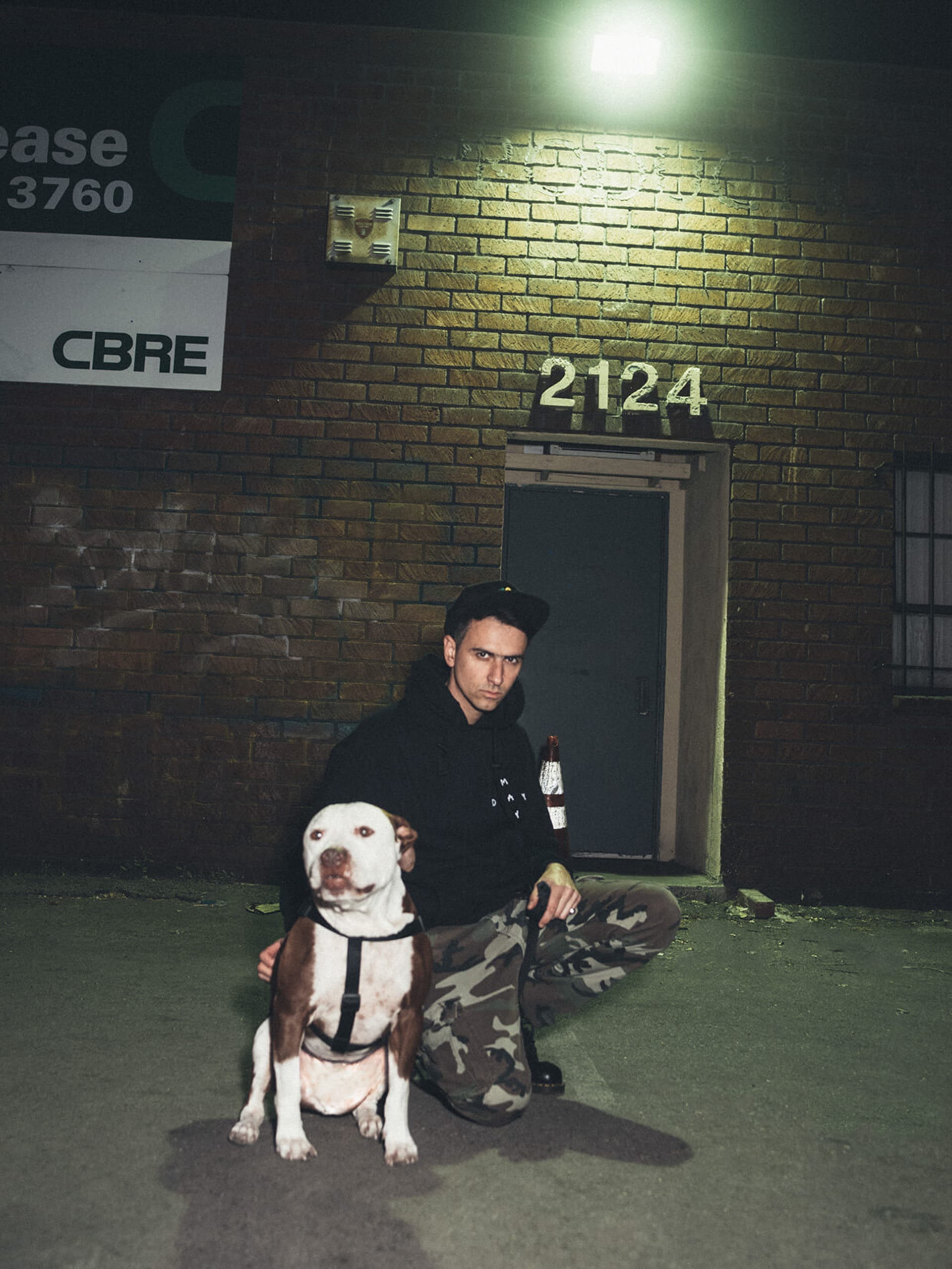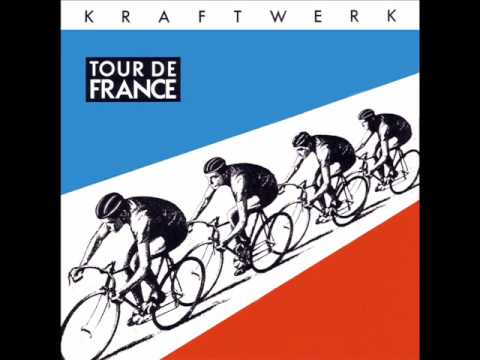
Does A Good DJ Conform To A Club’s Style? Ask Boys Noize
33-year-old producer and DJ Alexander Ridha—better known as Boys Noize—recently received an offer he couldn’t refuse: a collaboration with French electronic music pioneer Jean Michel Jarre. Boys Noize is featured prominently, yet his signature sound, which propels underground sensibilities to bigger audiences, is barely recognizeable. He corrected that on his own new album, Mayday, which contains a widespread choice of quotes and samples from legendary left-field electronic music. To promote his new album, Ridha met with Max Dax at the headquarters of his BNR label in Berlin.
How did you get clearance for that Kraftwerk sample you used on “Euphoria” from your new album Mayday?
Kraftwerk? I didn’t use a Kraftwerk sample.
But it sounds like “Tour De France”.
Ah. That’s actually me breathing, not a sample.
I ask because collage and appropriation are often considered the most distinctive and formative arts of the 20th century. What do you think?
Many house tracks were built on samples from old disco tunes, as was a lot of electronic music. Apart from the legal issues, I try to squeeze original sounds out of my drum machines and synths so that I don’t have to sample at all. But I monitor what others do. Younger producers might pilfer from a new Rihanna record, and I think that’s pretty cool—even if it’s not an option for me.
How important is it to have a unique sound?
It’s the most important thing. It’s especially imperative in electronic music to create a sound architecture that’s very much your own. I’ve even developed a handicap when it comes to producing Boys Noize songs: I refuse to use the same sound in more than one song. I would call that a leitmotiv in my music; I use a different set of drum sounds on each and every song.
And yet Mayday sounds very cohesive. How’d you pull that off considering the eclectic sound palette?
At the end of the day my ears tell me whether a song is uniquely my style or if I still have to work on it. A lot of DJs and producers tell me that they can immediately hear it if I made a particular song, so there must be something in my sound aesthetics and production methods that glues everything together. But I admit that my method is much more exhausting than it would be to define a sound kit beforehand and use it on every track for a new album. Take Justice, for example: every Justice track sounds the same, even if they use different rhythms, hooks and melodies. I totally can see the benefits of working that way, but I can’t compose like that. I actually like the new generation of drum machines a lot. They’re built and programmed in a way that encourages you to use concrete sounds or field recordings and then turn them into drum sounds by tweaking the dynamics with filters and effects.
Do you ever call your tracks “songs”?
I think I should call them “tracks” even though most of them don’t obey the unwritten-but-rigid rules of techno and house. I get bored if a track of mine is only based on a six-minute drum loop. Don’t get me wrong: I totally enjoy endless repetition when I go out. And I also take advantage of that concept when I DJ by mixing records into an endless beat. But when it comes to writing my own music, I want diversity. I remember receiving a fax from Laurent Garnier back in the day complaining that he had difficulties using one of my records in his sets because it wasn’t straightforward enough. But I didn’t and I still don’t care about that. I can actually DJ pretty well with my own tracks, even though they have a lot of breaks and often consist of many different cut-up parts.
Did you fancy the cut-up technique of hip-hop DJ sets in the past?
Yes, indeed. When I DJ, a lot of my technique derives from hip-hop. On the other hand, if I play at Berghain, I try to pay respect to the space and play the type of music Berghain stands for. Cutting up music means that you’re constantly throwing a lot of different types of music at the dance floor, but sometimes it’s better to play some monotonous techno to get into the groove. A good DJ should be able to adjust to a specific venue.
In other words, your definition of a DJ set is like a data stream. You’d be able to deliver a more diverse range of musical “information” in a cut-up set than in repetitive techno set that allows people to tune in and to lose track of time.
Exactly. It’s like sending out a stream of music data to the dance floor. I actually like the term “stream,” like in “river,” because when I produce music in my studio I often feel like I’m drifting away in the stream of my own music. That often happens when I’ve just bought a new drum machine or a synth and start to get lost in its sound universe. Diving into the moment and seeing what will eventually happen is the true pleasure of making music—especially electronic music. I rarely start working on new tunes with a decisive concept or idea in my head. More often than not it’s really the music that directs my process. And for me that’s the juice.
The common thread on my new album was an attempt to avoid 4/4 in favor of broken beats. I also tried to explore new tempos. For the first time, you can actually hear a couple of slow Boys Noize songs. But apart from that, my music is usually aimed at the dance floor: it’s music for clubs. On my last EP, Strictly Raw Vol.1, I really enjoyed using only one drum machine, one synth and a lot of repetition. I enjoyed that raw and minimalistic live session so much that I decided to release it as a record. In a way it’s like a predecessor to Mayday, as it foreshadowed a lot of the raw production on the new tracks.
You recently collaborated with Jean Michel Jarre on the title track of his album Electronica 1: The Time Machine. How did that unlikely collaboration unfold?
He called me up and invited me to collaborate, and then we met twice. He said he knew all my records and that he was a fan of mine. The funny thing is that I own all of his records, too.
When you met in Berlin, did you go to a restaurant or did you meet in your studio?
I think the first time we met was in a hotel room. After we both embraced the idea of working together, he sent me a few disco arpeggio loops. I used the sketches to build a proper track on top of them, which I then sent back. We went back and forth a couple times, and since he was the executive producer of the album, he finished the track in a fashion that only he would. But that’s alright. It felt like an honor working with him. When we met for the second time, he visited me at my studio. He brought a cameraman with him and we filmed a behind-the-scenes conversation. He’s pretty professional!
You mentioned that you own all of his albums. Do you buy a lot of records?
Yes. I buy new records every week. I buy a lot of techno records, and I try to continuously check out all the new releases. That allows me to listen to new ideas and trends, but it also brings to mind all the continuities within electronic music. I mean, a lot of new releases basically perpetuate the purist idea of Berlin or Detroit techno. By listening to and trying to understand the concepts behind all that music, I’m able to get inspired and to calibrate myself when I produce my own music. There’s no rule that you can’t alter or break. But it certainly doesn’t interest me to produce a techno track that could have been released in 1993. I try to create something new.
You’re like a chef who deconstructs and reassembles musical elements to find new forms.
That’s called molecular cuisine, right? I’m not a scientist, and when I do music it’s all so much more intuitive. Let’s take a kick drum, for instance; I might start with a sine wave, but I won’t stop experimenting until I find a sound that would also function on an Ostgut Ton record. But that process always involves an element of uncertainty. I want to keep myself thrilled at every turn, and that often starts with inventing a new kick drum sound.
Have you recently heard any genuinely new sounds on other artist’s records?
Well, nothing compares to childhood experiences, when everything you hear is genuinely new. Sometimes I deliberately try to revisit moments like when I was 16 or 17 years old, when everything I heard was brand new to my ears. I try to remember how it felt when I first heard jungle or breakbeats or sped-up samples from hip-hop records. There’s innocence to such epiphanies.
How does that bleed into your productions?
It’s very simple: I enjoy making music. I collaborated with a couple of singers on my record because I wanted to create something that I imagine would transfer that joy to the listener. You know, a lot of electronic music nowadays sounds cold and distanced to me because there’s too much conceptualization involved and too much focus on sonic perfection. But I also embrace exotic, lo-fi sounds like string arrangements in Arabian music. They have scales that are so different from our Western scales, and they never use 4/4 rhythms—they use really twisted weird rhythms. It’s all so much more complex. My girlfriend, who’s a piano virtuoso, always gets sort of nervous when I play her Arabian string music.
Published June 15, 2016.

